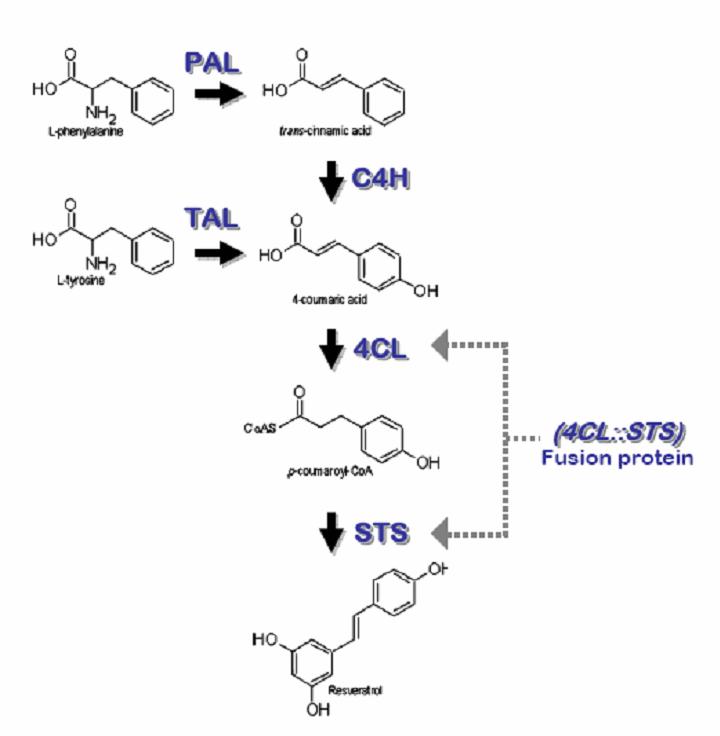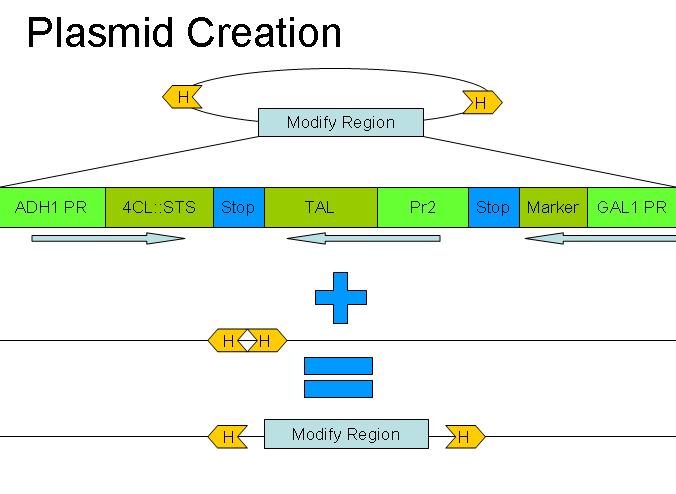|
|
| Line 1: |
Line 1: |
| | {|align="justify" | | {|align="justify" |
| - | |This year, the Synthetic BiOWLogists are focusing on two new projects. The first project is the creation of BioBeer by incorporation of the resveratrol biosynthetic pathway into the Saccharomyces cerevisiae genome. Resveratrol production during fermentation will be quantified and compared with natural resveratrol sources. The second project is the construction of a novel virus-mediated signal amplification system. The initial focus of this project will be to detect and report the presence of an extremely small proportion of a target genotype in a mixed population. | + | |This year, the Synthetic BiOWLogists are focusing on BioBeer!!! The creation of BioBeer entails the incorporation of the resveratrol biosynthetic pathway into the Saccharomyces cerevisiae genome. Resveratrol production during fermentation will be quantified and compared with natural resveratrol sources. |
| | | | |
| | | | | | |
| Line 6: |
Line 6: |
| | |- | | |- |
| | | | |
| - | | + | == '''BioBeer''' == |
| - | == '''Project 1: Viral Amplification'''== | + | |
| - | === Background ===
| + | |
| - | [[Image:Detection.jpg|200px|right]]
| + | |
| - | | + | |
| - | Cell number and cell type detection is an important area of active interest. Both in cancer detection and monitoring circuit stability, the ability to quantify a small proportion of deviant cells is critical to understanding population mechanics. The ability to distinguish between genotypes will allow researchers to better understand how organisms lose engineered circuits without a selective pressure and allow for earlier treatment of precancerous tumors. Additionally, detection of the presence of unique genotypes in an initially homogeneous population allows for contamination alert.
| + | |
| - | | + | |
| - | Fundamental Question: What is the lower limit in cell density and proportion with which we can detect differing cell genotypes and phenotypes?
| + | |
| - | | + | |
| - | Foundational Technology:To use an engineered biological system to amplify detection signals.
| + | |
| - | | + | |
| - | Refining the question: Our project will detect the presence of a (small) proportion of a specific strain based on genotype (supF-). Our system will quantify the unique proportion using controlled exponential amplification with phage as a mediator.
| + | |
| - | | + | |
| - | === Concept ===
| + | |
| - | By engineering and repackaging temperature-sensitive phage, we plan to implement a signal amplification design that can be generalized to detect unique genotypes within a population. As a proof of principle, our project examines the ability to use phage to detect the presence of supF+ genotype. SupF is a modified tRNA and Aminoacyl tRNA synthetase enabling the suppression of amber stop codons (UAG). The modified tRNA allows to readthrough of amber stop codons with the incorporation of tyrosine at the amber codon.
| + | |
| - | | + | |
| - | Engineered bacteriophage will be created with missense mutations (incorporation of nonnatural internal amber codons) on critical coding regions that regulate the activity of the phage. Lambda phage is modified to have supF+ dependent lysis and supF+ mediated infectivity.
| + | |
| - | | + | |
| - | [[Image:SideTailFiberPlan.jpg|right]]
| + | |
| - | | + | |
| - | Additional detector cells with partial resistance to non-modified lambda will display a GFP output due to infection by the supF dependent lambda.
| + | |
| - | | + | |
| - | === Constructs ===
| + | |
| - | SupF dependent phage
| + | |
| - | Modified Side Tail Fiber
| + | |
| - | SupF dependent and temperature sensitive lysis
| + | |
| - | | + | |
| - | | + | |
| - | Amber plasmid
| + | |
| - | tRNA/synthetase
| + | |
| - | | + | |
| - | Amber Suppressed RFP (ARFP)
| + | |
| - | Modification of Tyr67 of [http://partsregistry.org/wiki/index.php?title=Part:BBa_I13521 BBa_I13521] into an amber codon. The insertion of a stop codon into the RFP chromophore mediates the difference in RFP output between supF+ and supF- cells.
| + | |
| - | | + | |
| - | | + | |
| - | Detector Circuit
| + | |
| - | [ptet][RFP][plambda][tetR]
| + | |
| - | | + | |
| - | === Molecular Biology ===
| + | |
| - | === Experimental Results ===
| + | |
| - | | + | |
| - | == '''Project 2: BioBeer''' ==
| + | |
| | === Concept === | | === Concept === |
| | [[Image:Resveratrol.JPG|right]] | | [[Image:Resveratrol.JPG|right]] |
| This year, the Synthetic BiOWLogists are focusing on BioBeer!!! The creation of BioBeer entails the incorporation of the resveratrol biosynthetic pathway into the Saccharomyces cerevisiae genome. Resveratrol production during fermentation will be quantified and compared with natural resveratrol sources.
|
|
|
BioBeer
Concept
Resveratrol is an unique phytoalexin produced by grapes, peanuts, and knotweed that has known and putative physiological effects. In mice, resveratrol has been linked to anti-inflammatory, anti-cancer, and cardiovascular benefits. Resveratrol has been reported to significantly extend the lifespan of the Saccharomyces cerevisiae. Additionally, resveratrol has been hypothesized to account for the [http://en.wikipedia.org/wiki/French_Paradox French Paradox.]
Using an engineered biosynthetic pathway in Saccharomyces cerevisiae, this project will attempt to create [http://en.wikipedia.org/wiki/marmite marmite] and beer. A proprietary hefeweizen strain was obtained from St. Arnold's [http://www.saintarnold.com/]. This industrial strain is a putative diploid/polyploid strain that is used for fermentation of unfiltered beer.
Pathway Design
|
Typrosine Ammonia Ligase (Rhodobacter sphaeroides)
4-coumarate CoA-ligase (Arabidopsis thaliana)
Stilbene Synthase (Vitis vinifera)
Roadmap
"Lorem ipsum dolor sit amet, consectetur adipisicing elit, sed do eiusmod tempor incididunt ut labore et dolore magna aliqua. Ut enim ad minim veniam, quis nostrud exercitation ullamco laboris nisi ut aliquip ex ea commodo consequat. Duis aute irure dolor in reprehenderit in voluptate velit esse cillum dolore eu fugiat nulla pariatur. Excepteur sint occaecat cupidatat non proident, sunt in culpa qui officia deserunt mollit anim id est laborum."
Recombineering
Experimental Results
No Taste-testing.
|
 "
"



